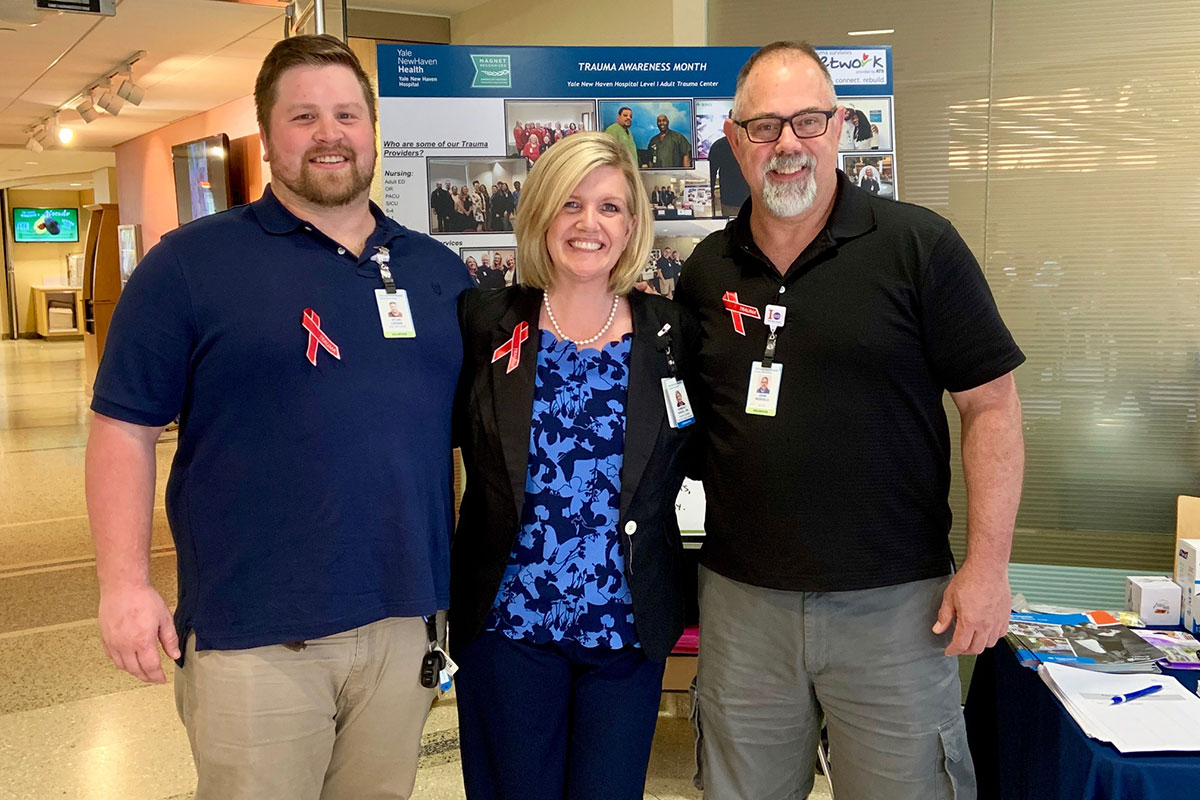
Popular Locations
- Yale New Haven Children's Hospital
- Yale New Haven Hospital - York Street Campus
- Yale New Haven Hospital - Saint Raphael Campus

Published December 12, 2023

Justin Vanderharten never used to be superstitious – until Sept. 13, 2019, a day which was a Friday.
On that day, the East Haven native, then 26 years old, was riding his motorcycle when he took a corner too fast and crossed the yellow line. He was struck by a car and subsequently transported by ambulance to Yale New Haven Hospital. There he discovered he had suffered fractures in his elbow, forearm, wrist and leg, as well as a severed artery in his right leg. Trauma physicians attempted to save his foot, but it quickly became apparent that it would need to be amputated above the ankle.
It would not be the last amputation. Over the next year, Vanderharten battled infections and underwent multiple surgeries for bone grafts, the insertion of plates and screws and additional incremental amputations. Finally, trauma surgeons presented him with a stark choice: If you try to keep the knee, you will face years of intermittent surgeries and pain. But if you want to get back to doing the things you did before the accident, we’ll amputate up to mid-thigh, conquer all the infections at last and fit you with a prosthesis.
The decision led to a final above-the-knee amputation on Sept. 23, 2020. It was his 28th birthday.
It’s been a long road to recovery, physically, mentally and emotionally. Vanderharten credits YNHH’s Trauma Survivors Network (TSN) program for helping him gain the mental strength he needed to make progress and move forward. “When I was going through it, it was hard for me to relate to anyone else. Whenever I thought I was already at the end of my rope, things would get even worse,” he said. “It was difficult to envision a decent future.”
Every year, approximately 4,000 patients are treated at YNHH after experiencing a traumatic injury that will permanently affect their lives. Like Vanderharten, many wonder what the future will hold as they recover. The TSN, a program of the American Trauma Society, is a national network that connects the community of survivors and their families with others who have sustained similar injuries. The network offers resources such as a patient/family handbook, peer support groups, multiple online programs, and a Peer Visitation Program that connects trauma patients with volunteers who are trauma survivors.
“Hospitalization following a traumatic injury can be filled with uncertainty, pain, anxiety and frustration. A traumatic injury can alter life in an instant, and recovery can be long and challenging,” said Kimberly Rivera, YNHH’s Trauma Survivors Network coordinator. “Our goal is to provide programs and resources for patients and families as they work to rebuild their lives after a serious injury.”
YNHH, one of only a few Level 1 trauma centers in the state, was the first TSN-affiliated facility in Connecticut and among the first trauma centers in the country to join the program.
“In order to provide substantial improvements to the way we deliver trauma recovery care, we joined the Trauma Survivor Network. It’s part of an effort to deliver additional psychological support and improve the outcomes that are not solely related to trauma-related injury,” said Jeannette Bronsord, RN, YNHH’s executive director of nursing surgical services.
The Peer Visitation Program at YNHH is staffed by volunteers who answer questions and provide information, support – and hope – to new survivors as they chart a path to a new normal.
“Although our practitioners are very experienced, I don’t think we can fully appreciate and anticipate what some of our patients are going through. They can better relate to someone who has been through a similar ordeal, someone who can serve as an example that there is a future for them,” said Adrian Maung, MD, adult trauma medical director and surgical director of Perioperative Services at YNHH and associate professor of surgery at Yale School of Medicine.
“Since they have all lived through the trauma recovery experience themselves, including the rescue scene, hospitalization, rehabilitation and return home, TSN peer visitors understand the concerns of new trauma patients on a deeply personal level,” Rivera said. “There is no handbook on how to handle trauma, but there is some commonality.”
John Redfield of Manchester is one of the TSN volunteers and visits with trauma patients as part of YNHH’s amputee support group. Redfield lost his leg in a motorcycle accident in 1991. “I talk to new amputees about what will be possible in six months, in a year, and for the long term. It takes away the unknown. Seeing me helps them visualize what their life can and will be like,” he said.
Today Vanderharten has a prosthesis that enables him to do everything he used to do – and more. A member of the Iron Workers Union, he returned to his physically demanding job in February 2021. He has also become a TSN volunteer – helping other survivors take their own steps forward and chart their own paths.
If you or someone you know is a trauma survivor and would like more information about becoming a volunteer at Yale New Haven Hospital, contact Kimberly Rivera at 203-688-3261or [email protected].